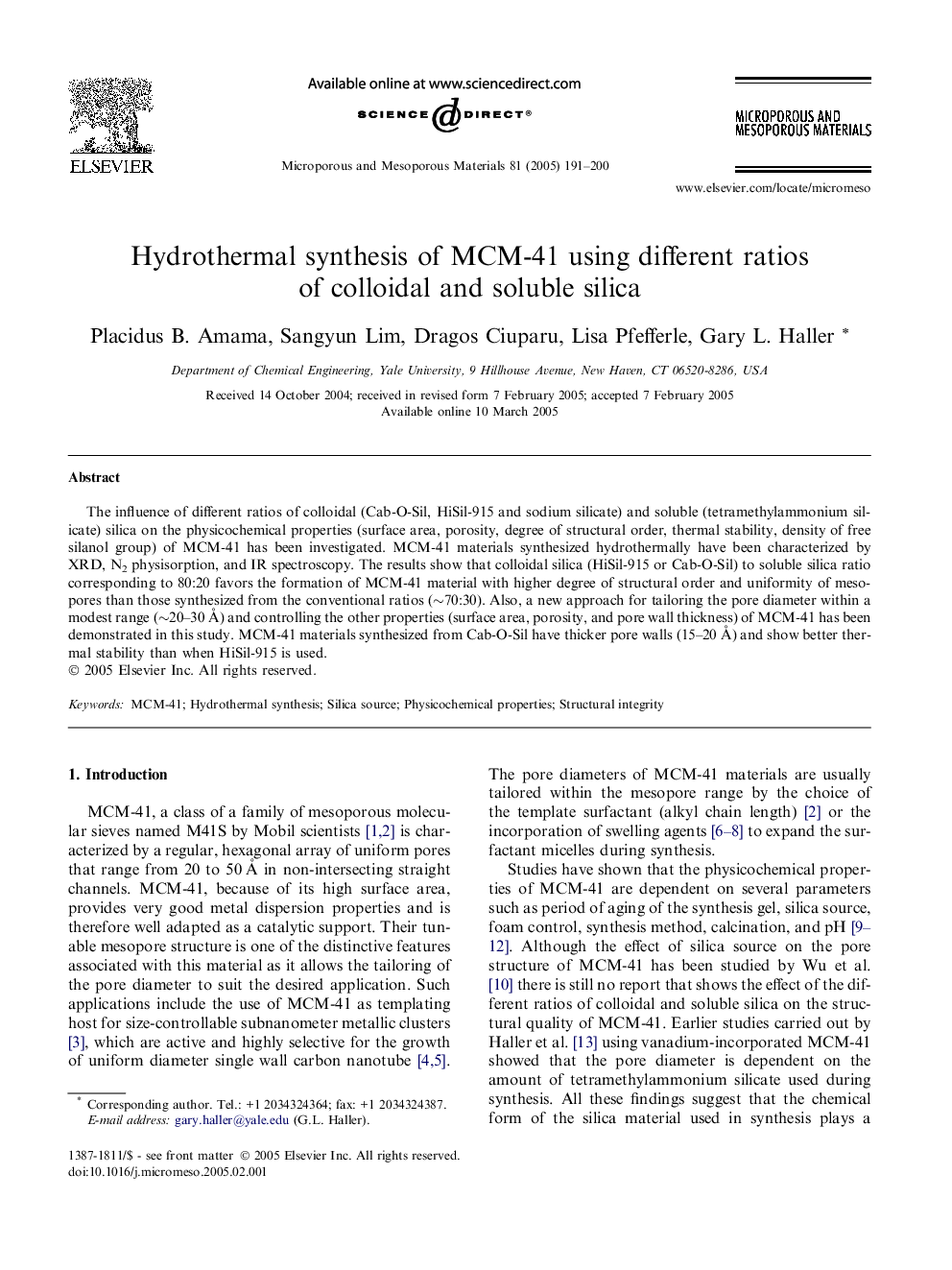| Article ID | Journal | Published Year | Pages | File Type |
|---|---|---|---|---|
| 9617713 | Microporous and Mesoporous Materials | 2005 | 10 Pages |
Abstract
The influence of different ratios of colloidal (Cab-O-Sil, HiSil-915 and sodium silicate) and soluble (tetramethylammonium silicate) silica on the physicochemical properties (surface area, porosity, degree of structural order, thermal stability, density of free silanol group) of MCM-41 has been investigated. MCM-41 materials synthesized hydrothermally have been characterized by XRD, N2 physisorption, and IR spectroscopy. The results show that colloidal silica (HiSil-915 or Cab-O-Sil) to soluble silica ratio corresponding to 80:20 favors the formation of MCM-41 material with higher degree of structural order and uniformity of mesopores than those synthesized from the conventional ratios (â¼70:30). Also, a new approach for tailoring the pore diameter within a modest range (â¼20-30Â Ã
) and controlling the other properties (surface area, porosity, and pore wall thickness) of MCM-41 has been demonstrated in this study. MCM-41 materials synthesized from Cab-O-Sil have thicker pore walls (15-20Â Ã
) and show better thermal stability than when HiSil-915 is used.
Related Topics
Physical Sciences and Engineering
Chemical Engineering
Catalysis
Authors
Placidus B. Amama, Sangyun Lim, Dragos Ciuparu, Lisa Pfefferle, Gary L. Haller,
